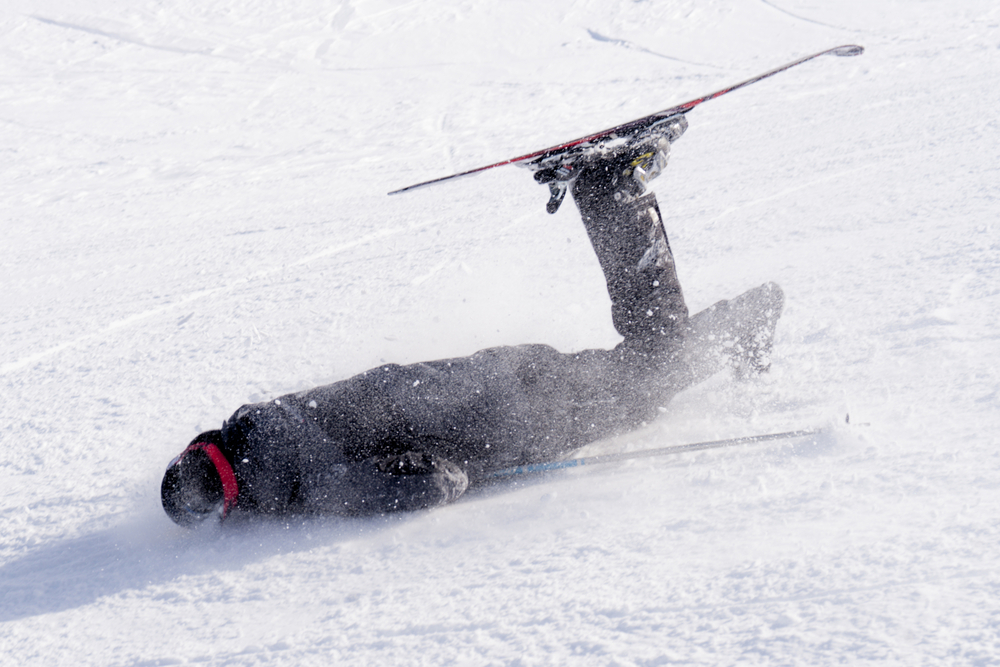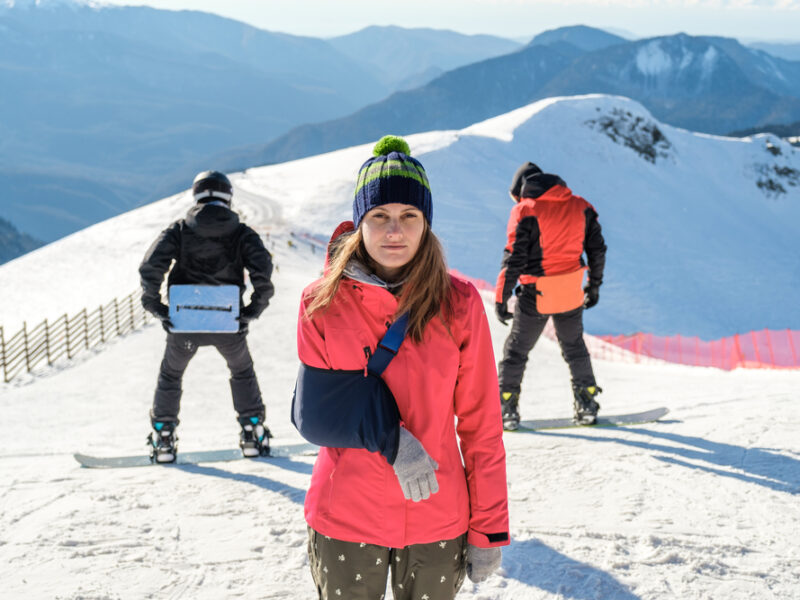Can I recover compensation after a ski resort accident?
Ski resort accidents can be life-altering or even fatal. These accidents can happen in a huge variety of ways. Some happen on the ski slope. Others happen at the resort. If someone else caused the accident that led to your injuries, you deserve to be compensated. In California, you can recover compensation even if you were partially to blame.
What are some examples of ski resort accidents?
During ski season, accidents can happen at ski resorts in 2 general ways:
- on the ski slopes, or
- in the resort.
Skiing or snowboarding accidents happen on the slopes. These are often severe accidents that can cause serious injuries. Some common examples include:
- hitting a tree,
- falling off a ski lift or chairlift,
- colliding with another skier, snowboarder, or ski patrol in the ski area,
- falling on the way down the slope,
- crashing into a barrier,
- crashing into the ski resort or lodge,
- falling after an equipment failure, or
- crashing because a jump or another feature of the slope was unsafe.
In some of these cases, someone else may have been responsible for the accident. Victims can hold the negligent party liable.
Accidents can also happen in the ski resort. These are often slip and fall accidents like:
- slipping on ice, snow, or sand in the resort’s entryway,
- tripping over a hidden hazard on the floor, or
- falling down stairs that broke underneath your weight.
In some of these accidents, you may feel like you were not paying enough attention to your surroundings. However, the ski resort has a legal duty of care to keep you safe while you are on their premises. This requires them to take reasonably necessary steps to find and remove hazards on the property. If they cannot be removed, you should at least be warned about these dangerous conditions. If the ski resort fails to do so, it can face premises liability for its negligence.

What are some common injuries that skiers or snowboarders suffer?
Skiers and snowboarders can suffer serious injuries, regardless of whether their ski resort accident happened in the resort or on the slopes. Some of the most common ski injuries that you can suffer include:
- broken bones, especially a broken:
- wrist or hand, often from trying to break your fall,
- leg,
- back,
- hip,
- pelvis,
- neck, or
- arm;
- concussion or other traumatic brain injury (TBI),
- head injuries, including a fractured skull,
- spinal cord injuries,
- soft tissue injuries,
- internal bleeding or other injuries,
- whiplash, and
- cuts or lacerations.
Many of these can be life-threatening. Some lead to fatalities. All of them can require extensive medical treatment.
What compensation can I recover?
If you were hurt in a ski resort accident, you are entitled to financial compensation. The amount of compensation that you deserve should equal your losses that stemmed from the accident, also known as your legal damages. Many people are under the misimpression that it only covers your medical bills. That is not true. It also covers:
- reasonably-anticipated future medical expenses,
- professional losses, including your lost wages and any reduction in earning capacity caused by disabling injuries suffered in the accident,
- physical pain,
- pain and suffering,
- emotional distress,
- lost enjoyment of life, and
- loss of consortium or companionship felt by your loved ones.
In rare cases, you may also recover punitive damages. These are imposed against defendants who acted incredibly poorly in order to punish them for their conduct. They are hardly ever awarded in cases that only involve negligent conduct, though.
What if I was partially to blame for the ski accident?
In California, if you were partially to blame for a ski accident or an accident at a ski resort, your compensation would be reduced by your percentage of responsibility.
Lots of ski resort accidents are shared fault incidents, especially slip and falls. In these incidents, the victim was partially responsible for the accident. However, even ski slope accidents can result from shared fault.
For example: Benny suffers a catastrophic injury in a ski crash. However, he was skiing off-piste and had not seen the signs about the dangerous trails when he left the resort for a backcountry trail.
Under California personal injury law, shared fault situations are resolved through the doctrine of pure comparative negligence.1 This rule requires the jury in a personal injury case to assign a percentage of fault to all of the parties involved. The victim’s award is then reduced by his or her share of responsibility.
For example: Benny files a lawsuit against the ski resort for his accident. The jury finds that his legal damages are $500,000. However, the jury also finds that he was 80 percent at-fault because he had not seen the signs, even though they were prominently placed. Benny’s award is reduced by 80 percent to $100,000.
Note that pure comparative negligence lets you recover compensation, even if you were primarily to blame for the ski resort accident. In these cases, you can still recover some compensation for your losses. This is different from many other states. A lot of other states use the rule of modified comparative negligence. This rule prevents you from recovering any compensation if you were more than half at-fault.
While California’s comparative negligence rule only gets applied at trial, it still affects the rest of your case. If there is evidence that you were partially to blame for a ski resort accident, any settlement offers you receive will be reduced accordingly.
How can a personal injury lawyer help?
A personal injury lawyer can help you in 2 ways if you have been hurt in a ski resort accident. They can:
- increase settlement offers made to you, and
- file a personal injury lawsuit on your behalf if no offer is sufficient.
After the accident, an insurance adjuster for the resort’s insurance provider will investigate the case. If they think that the resort could be to blame, they will make an initial settlement offer. This offer is timed to be enticing. It is usually offered right when your medical bills begin to worry you. The offer usually only covers the medical expenses for the healthcare you have already received.
For many victims, the initial settlement offer seems like a really good deal. Actually, it is generally a lowball offer designed to end the case for as little as possible.
However, victims who do not have the legal advice of an accident lawyer rarely know this.
By establishing an attorney-client relationship with a personal injury attorney from a reputable California law firm, you can get the information you need to make an informed decision about whether to accept a settlement offer or not. Your attorney can tell you what your case is likely worth. They can negotiate with the ski resort and its insurer on your behalf. This often leads to a settlement offer that is much higher than the first one that you received.
If no fair settlement offer is made, your personal injury lawyer can sue the ski resort. By filing a personal injury lawsuit, it sets a deadline – the trial date – for settling the case. Settlement negotiations will continue. They will heat up as the trial date approaches.
Most personal injury cases settle out of the courtroom. However, if no settlement is reached before the trial date, your case will go to trial. Your attorney will present your case for compensation to the jury. The jury will then decide if you deserve to be compensated, and how much is a fair amount.
If the ski resort accident was fatal, the victim’s loved ones can retain a lawyer to help them file a wrongful death claim against the resort.

